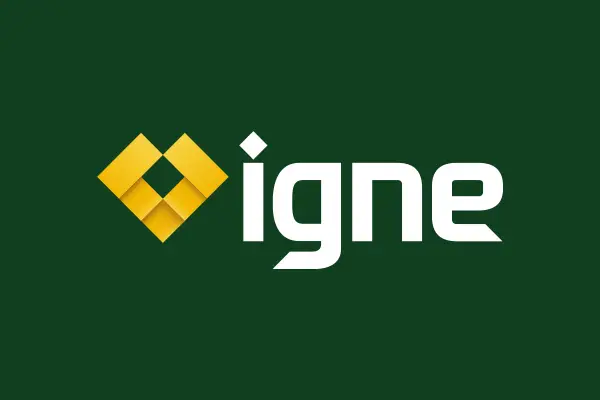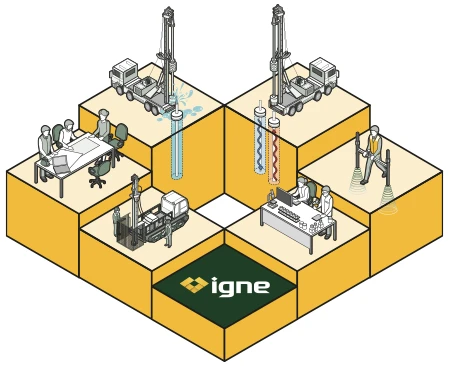

Utility Surveys for Site Investigation
Utility surveys are a crucial component of site investigation, providing detailed information about the location, condition, and connectivity of underground utilities such as gas pipes, electricity cables, water mains, and drainage systems.
About
What are Utility Surveys in Site Investigation?
These surveys are essential for identifying and mapping buried infrastructure to avoid potential disruptions during construction or excavation activities.
In site investigation, utility surveys play a vital role in understanding the risks associated with underground utilities. By providing accurate data on the location and depth of these assets, utility surveys help prevent accidental strikes during groundworks, ensuring both safety and compliance.
These surveys can range from basic detection and mapping to more advanced assessments such as PAS 128:2022 standard utility surveys, ground investigation utility avoidance strategies, and drainage connectivity studies, which often include CCTV inspections.

Advantages
Why Commission Utility Surveys?
Commissioning a utility survey provides several critical advantages that go beyond simply identifying underground infrastructure. Utility strikes during construction can lead to severe safety risks, project delays, costly repairs, and potential legal issues. Therefore, conducting utility surveys before beginning any groundworks is essential for de-risking the project and ensuring compliance with regulations and industry standards.
At Igne, we specialise in comprehensive utility surveys that provide accurate data and detailed mapping of all subsurface utilities. Our services allow clients to make informed decisions, minimising the risk of damaging underground services and ensuring a smoother construction process.
Whether you're working on a small residential development or a large-scale infrastructure project, utility surveys are a necessary step in protecting your project, workforce, and reputation.
Igne’s utility surveys also offer an opportunity to optimise design and planning. By understanding the layout of existing utilities, project teams can better plan excavation routes, foundation placement, and service connections, ensuring the most efficient and cost-effective design solution.
Lifecycle
How Utility Surveys are Designed, Planned, & Carried Out
Utility surveys follow a structured approach to ensure comprehensive coverage and accurate results. At Igne, we take great care in the design, planning, and execution of each survey, tailored to the specific needs of your project.
Below is an outline of the key components of utility surveys, including PAS 128 standard utility surveys, ground investigation utility avoidance, and drainage connectivity studies.
PAS 128 Standard Utility Surveys
PAS 128 is the recognised industry standard for utility detection, verification, and location in the UK. Igne conducts PAS 128 standard utility surveys to ensure we deliver high-quality, reliable data that meets regulatory requirements. These surveys involve the use of various techniques, including electromagnetic locators (EML) and ground-penetrating radar (GPR), to detect the position and depth of underground utilities.
PAS 128 surveys are classified by four quality levels (QL-A to QL-D), with QL-A offering the most precise, physically verified results. Our surveyors follow the rigorous guidelines set out by PAS 128 to ensure the accuracy of the data provided.
Ground Investigation Utility Avoidance
During ground investigations or other intrusive activities, avoiding utility strikes is critical for safety and project success. Igne’s ground investigation utility avoidance surveys are designed to ensure that all known utilities are clearly identified and mapped before any digging or drilling begins. These surveys help minimise the risk of accidental damage to underground infrastructure, preventing costly repairs, delays, and potential safety hazards.
By using advanced detection methods such as GPR and electromagnetic techniques, we can accurately locate and map utilities, allowing for safer ground investigation practices.
Drainage Connectivity & CCTV Surveys
Understanding drainage systems is key to ensuring proper site drainage and preventing issues such as flooding or water ingress. Igne offers drainage connectivity surveys to map out existing drainage networks and identify any potential issues.
To complement this, we also provide CCTV drainage inspections, where small, remotely controlled cameras are used to visually inspect the interior of drainage pipes. These surveys are invaluable for assessing the condition of drainage infrastructure, identifying blockages, damage, or deterioration, and ensuring compliance with environmental regulations.
The CCTV footage can also be used for maintenance planning and repair decisions, helping to avoid unexpected drainage issues during construction.
Benefits
Benefits of Utility Surveys
The benefits of utility surveys extend far beyond simple compliance and safety. Here’s a breakdown of the specific advantages offered by each type of utility survey:
PAS 128 Standard Utility Surveys
By adhering to the PAS 128 standard, you can be confident in the quality and reliability of the survey data. This standardised approach ensures that all underground utilities are accurately detected and mapped, reducing the risk of service strikes and ensuring smooth project execution. With PAS 128, the survey data can be used across different stages of the project, from design to construction, providing a robust foundation for decision-making..
Ground Investigation Utility Avoidance
Utility avoidance surveys help to prevent service strikes, which can lead to costly project delays, dangerous safety incidents, and expensive repairs. By ensuring that all underground utilities are correctly identified, these surveys enhance safety and protect your project from unforeseen risks, saving time and money.
Drainage Connectivity & CCTV Surveys
CCTV drainage surveys offer unparalleled insights into the condition of underground drainage systems. By using video footage to inspect pipes, we can detect issues such as blockages, leaks, or structural damage, which might not be visible through other survey methods.
These surveys enable proactive maintenance, helping to prevent more significant drainage issues that could disrupt the project. Drainage connectivity surveys also ensure that construction plans align with existing drainage systems, reducing the likelihood of drainage problems post-construction.
Learn More
Frequently Asked Questions about Utility Surveys
- What is a utility survey?
A utility survey is a process of detecting, mapping, and assessing underground utilities such as gas pipes, water mains, electrical cables, and drainage systems. These surveys help avoid accidental strikes during construction and provide essential data for planning and design.
- Why are PAS 128 standard utility surveys important?
PAS 128 provides a consistent and high-quality standard for utility detection and mapping in the UK. Commissioning a PAS 128 compliant survey ensures that underground utilities are accurately detected, minimising the risk of utility strikes and ensuring compliance with industry standards.
- What is ground investigation utility avoidance?
Ground investigation utility avoidance surveys are conducted to identify and map underground utilities before conducting intrusive groundworks, such as drilling or excavating. These surveys help prevent accidental damage to utilities, enhancing safety and reducing the risk of costly project delays.
- How do CCTV drainage surveys work?
CCTV drainage surveys use a small, remotely operated camera that is inserted into drainage pipes. The camera records real-time footage, allowing surveyors to inspect the condition of the pipes and identify issues such as blockages, damage, or leaks.
- How accurate are utility surveys?
The accuracy of utility surveys depends on the methods used and the quality level required. PAS 128 standard surveys, especially those classified as QL-A, offer highly accurate results, often involving physically verified locations. Electromagnetic detection and GPR also provide reliable data for most applications.
- What happens if a utility strike occurs during construction?
Utility strikes can lead to significant project delays, safety risks, and costly repairs. Conducting comprehensive utility surveys before starting any groundworks greatly reduces the likelihood of these incidents.
In the event of a utility strike, immediate action must be taken to repair the damage and ensure site safety.
Learn More about Specific Utility Surveys
Contact us
Ready to minimise risks and ensure a seamless construction process?
Contact Igne today to learn more about our range of utility surveys and how we can help de-risk your project.
Explore all the survey services we offer to provide you with the confidence you need at every stage of your development.

Topographical Surveys

Utility Surveys

GPR (Ground Penetrating Radar) Surveys

Measured Building Surveys

Monitoring Surveys

Drone (UAV) Surveys

Bathymetric Surveys

